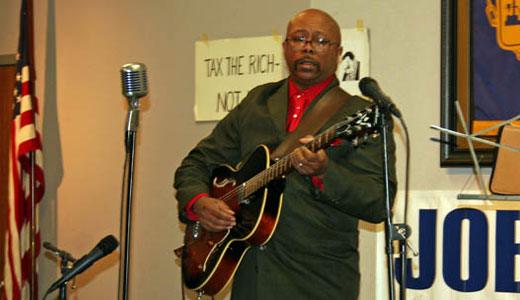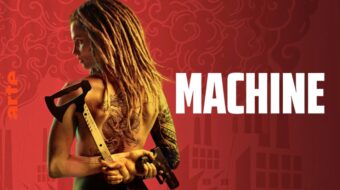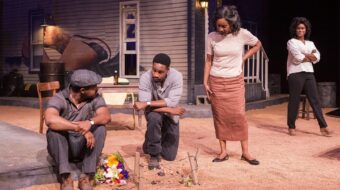
DALLAS – Union and civil rights activists came together to produce a songfest at the Communications Workers of America union hall on the afternoon of Sunday, February 26. About 75 people gathered to listen and participate in traditional bluegrass-type union songs, honored civil rights songs, and modern versions of each. One of the most outstanding performers was Tunde Obazee, who announced that he was born in West Africa. His reggae performances of his own compositions were ad-libbed with comments on current developments. The Rev. K. M. Williams presented little-known but extremely effective songs from the civil rights movement.
Among the traditional union singers were professionals Matt Taylor of New Mexico, JD Thompson of Oklahoma, and Kenny Winfree of Tennessee.
Dallas’ most outstanding civil rights leader, the Rev. L. Charles Stovall, gave a short presentation on why labor and civil rights belong together. He recounted some of the history of the movement and applauded labor’s role in backing civil rights struggles. A quotation was delivered from the AFL-CIO Convention in December 1961, where Dr. Martin Luther King Jr said, “Negroes are almost entirely a working people. There are pitifully few Negro millionaires, and few Negro employers. Our needs are identical with labor’s needs – decent wages, fair working conditions, livable housing, old age security, health and welfare measures, conditions in which families can grow, have education for their children and respect in the community. That is why Negroes support labor’s demands and fight laws which curb labor. That is why the labor-hater and labor-baiter is virtually always a twin-headed creature spewing anti-Negro epithets from one mouth and anti-labor propaganda from the other mouth.”
The printed programs for the songfest honored labor and civil rights hero Paul Robeson. It said, “When we think of the great entertainers who have helped labor and civil rights, we may look up to Leadbelly, Sidney Poitier, James Earl Jones, and Harry Belafonte. But who do they look up to? Paul Robeson was the greatest of them all. He broke color barriers all over the world as an athlete, as an actor, and as a singer.”
Photo: PW












Comments